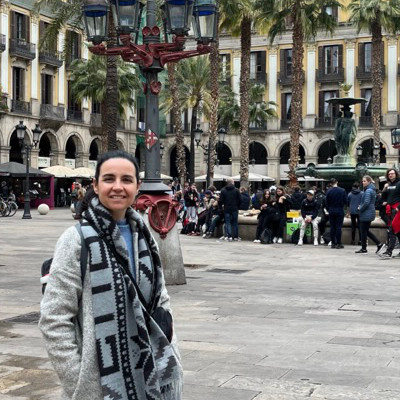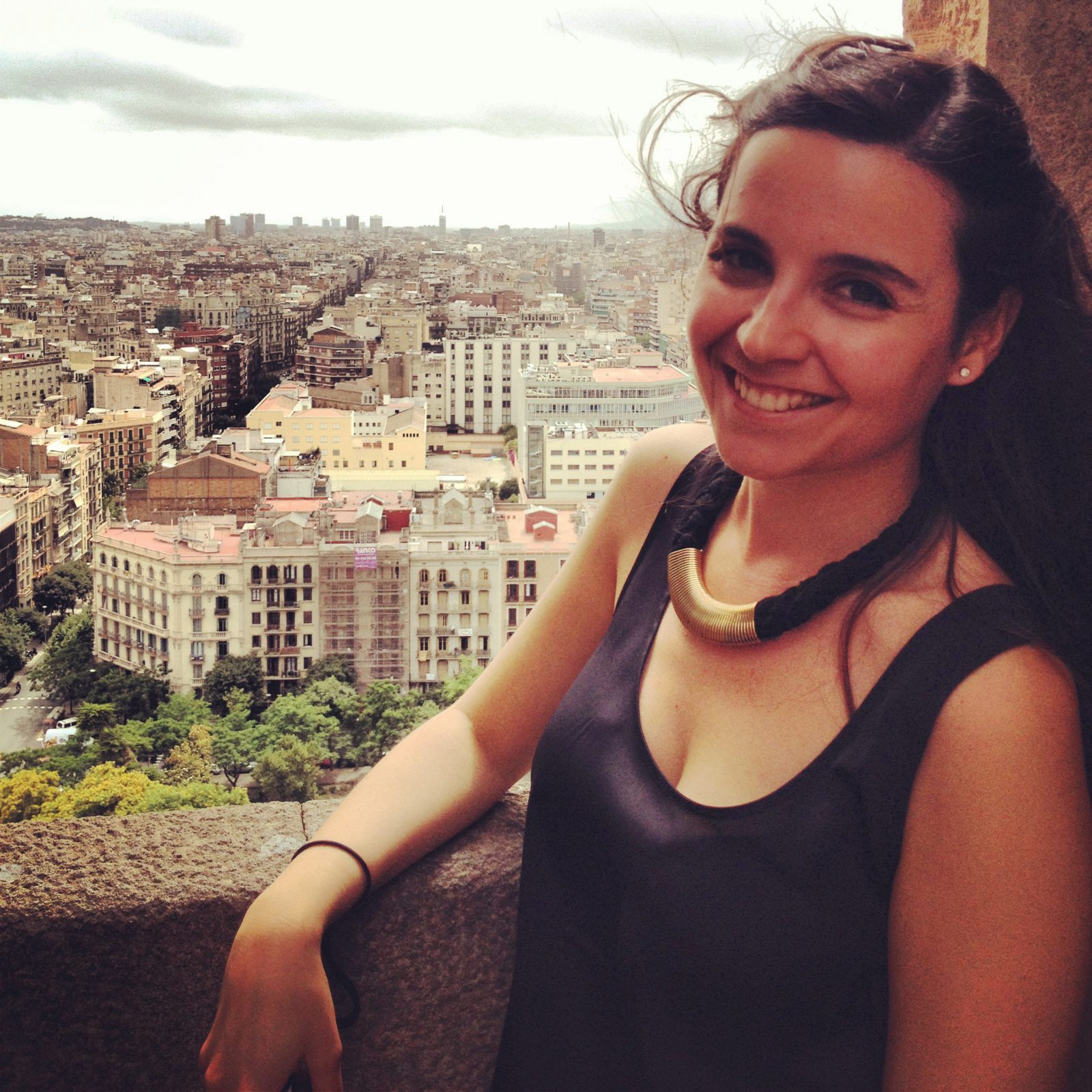Torre Bellesguard (also known as Casa Figueres) is a stunning house built by Gaudí for the wealthy Maria Sagués on a site of great significance for Catalan history. It was here that Martin I of Aragon, the last king of the Crown of Aragon from the House of Barcelona, had his palace built. The house Torre Bellesguard is now open as a museum and can be visited.

What to see and do at Torre Bellesguard
Torre Bellesguard is a beautiful villa with a garden in Barcelona. The name “Bellesguard” means “beautiful view” in Catalan, hinting at the privileged view available from this location. The current Torre Bellesguard is the work of Antoni Gaudí, and like many of his other buildings, it now serves as a museum and event location.

The House
Torre Bellesguard is the house that Gaudí designed on the site where once stood the Gothic palace of the last king of the House of Barcelona, Martin I of Aragon. Influenced by the grandeur of the place and its history, Gaudí worked on a house that looks very medieval and is full of symbols.
During a visit to Torre Bellesguard, you learn both about the history of the building and the symbols hidden within and its architectural value.
To design Torre Bellesguard, Gaudí was clearly influenced by Catalan Gothic, but with his own twist, such as the elongated windows, benches covered with trencadís (a characteristic mosaic style of Gaudí), or the tower topped with Gaudí’s characteristic four-pointed cross (in this case decorated with a crown and a spiral flag).
For a square building of only three floors, Torre Bellesguard appears surprisingly large.
Behind the main portal, you find a space that is clearly influenced by the Mudejar style: the white walls with graceful shapes are adorned by beautiful azulejos (wall tiles) and a striking lamp with stained glass that hangs in the center. The lamp is undoubtedly one of the main attractions of this space and was designed by Gaudí’s collaborator Domènec Sugrañes.

During the tour, you visit various rooms of the house. The attic is perhaps the most surprising place. Because the budget ran out, the walls here remained unfinished, making the structure of the building, with all its stones, arches, and vaults, visible to the eye.
The roof, which has a small terrace, lives up to the house’s name, as from here you have a fantastic view over all of Barcelona. Like in the old medieval castles, there is also a narrow path around the roof surrounded by battlements where you can walk. If you look closely, you can also find the face of a dragon on the skylights of the attic.

The Garden
The lush garden of Torre Bellesguard also deserves your attention and is covered during the tour. Here you will find, among other things, the remains of the palace of Martin I of Aragon, from where you can get a beautiful view of Torre Bellesguard.
The eye-shaped fountain in the gardens of Torre Bellesguard is another highlight. The two benches around the fountain are decorated with trencadís tiles and, thanks to their design, offer excellent acoustics for those who sit there.
In the garden, you will also find the museum’s restaurant and toilets, along with a hidden chapel and a cross.
Also notable is the wrought ironwork of the fences and the wall around the garden, all in Gaudí’s style.

The Stables
To the right under Torre Bellesguard are the old stables, where now a video presentation about Torre Bellesguard can be seen. Also, the old feeders for the horses are here.
The View from Torre Bellesguard
As said, Bellesguard means “beautiful view”, and that is certainly evident when you are in the house, and especially on the roof terrace, of Torre Bellesguard.

The Viaduct
Outside Torre Bellesguard, right on the square in front of the entrance gate, there is a notable construction. It’s a viaduct that Gaudí built to relocate the old road to the Sant Gervasi cemetery, which ran through the Bellesguard grounds. Gaudí reused the stones from the old palace wall for this purpose.
If you look closely, you can find some similarities with the viaducts in Park Güell.

Events at Torre Bellesguard
Torre Bellesguard, besides being a museum, is also a venue for parties and events. Regular events are organized here, such as food festivals and cozy markets. On those days, although you may not visit the house from the inside, you can still stroll around the gardens and enjoy the atmosphere and the work of Gaudí.
History of Torre Bellesguard
The last king of the House of Barcelona and the Crown of Aragon, Martí I l’Humà (Martin I of Aragon in Dutch), once sought a beautiful place to retreat, and thus he came to this point where Torre Bellesguard now stands. It was the poet Bernat Metge, who was then the secretary of the king, who proposed the name Bellesguard.
Martin I of Aragon had a castle built at Bellesguard, where he married his second wife, Margaretha de Prades, on September 17, 1409. This marriage remained childless, which meant the end of the lineage of the House of Barcelona and the arrival of the Trastámara on the throne of Aragon.
The house then fell to the church until Maria Sagués, the widow of the wealthy businessman Jaume Figueres, owner of the food store Antigua Casa Figueras on the Ramblas, bought it. She was alerted to this estate by architect Gaudí himself. She bought the estate, which contained the ruins of what was once the castle of Martin I of Aragon, and let Gaudí build a house.
The construction of Torre Bellesguard, initially called Casa Figueras, took place between 1900 and 1909 and belongs to the neo-Gothic phase of Antoni Gaudí. In the construction of Torre Bellesguard, Gaudí was supported by Domènec Sugrañes and Joan Rubió i Bellver, among others.
The house was in private ownership for many years and served as a hospital and orphanage, among other things. In 1969, Torre de Bellesguard was added to UNESCO’s World Heritage List. The current owners, the Guilera family, have opened the house to the public since 2013.

Torre Bellesguard Tickets
To enter Torre de Bellesguard, you need to buy tickets. Entrance tickets are available online or on-site. You can choose a self-guided tour, which works with an audio guide on the phone, or a guided tour. The audio guide is available in Catalan, Spanish, English, French, Japanese, and Russian. The guided tours last 40 minutes and only take place on weekends.
How to get to Torre Bellesguard
Torre Bellesguard is located outside the center of Barcelona, in the elevated district of Sarrià – Sant Gervasi. To get there by public transport, take the bus (123, 196, or H2) or the Metro L7 to Av. Tibidabo and walk the last part.
Useful information
Price: You can choose a tour with a guide (from €16) or an audio guide (from €9).
Discounts available for seniors and children between 6-18 years old.
Opening Hours: Tuesday to Sunday between 10:00 am and 2:30 pm. Closed on Mondays.
Note: Torre Bellesguard is unfortunately not wheelchair accessible.
Address: Carrer de Bellesguard, 20 08022 Barcelona
Public Transportation:
Metro: Av. Tibidabo (L7)
Bus: 123, 196, H2


